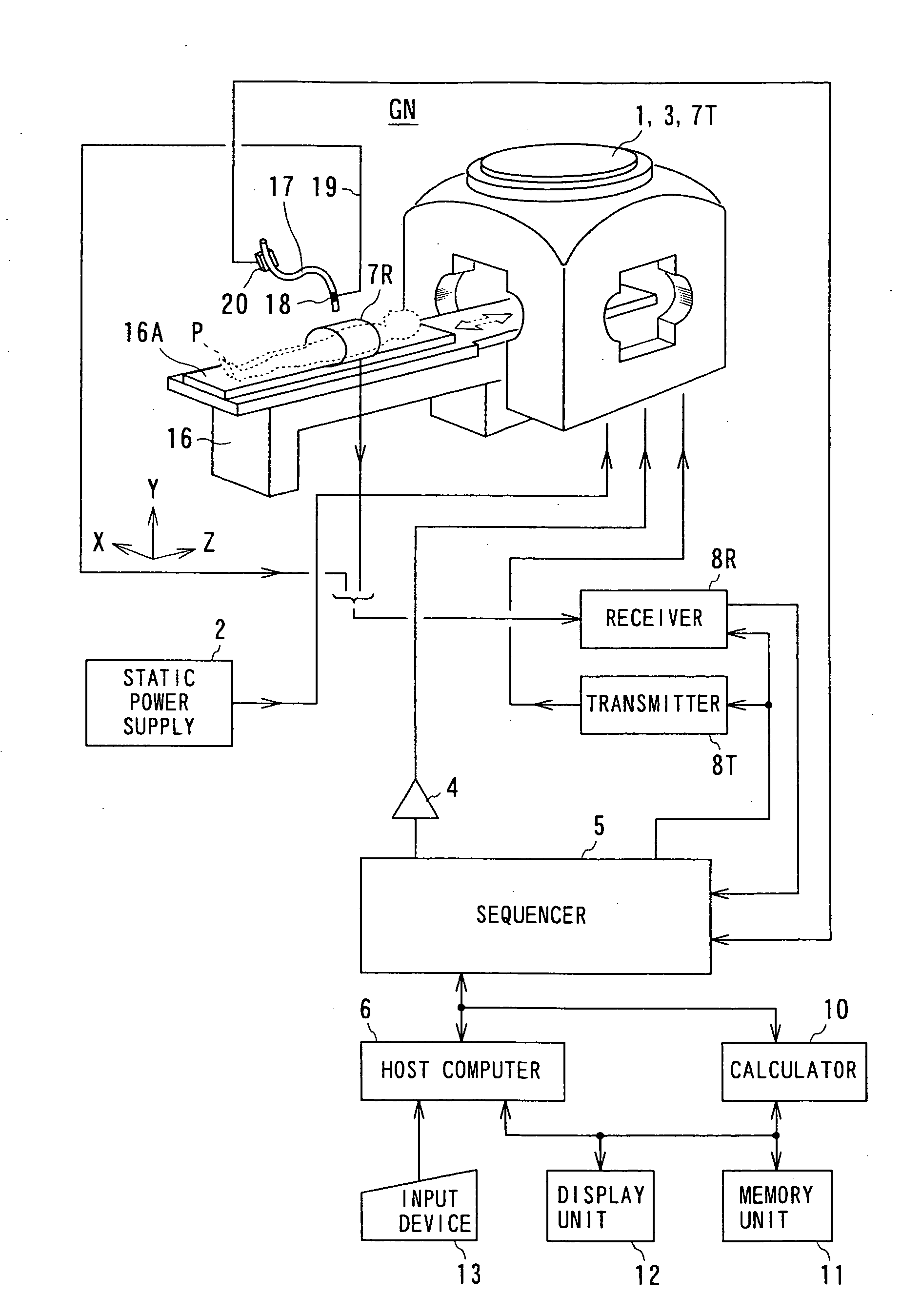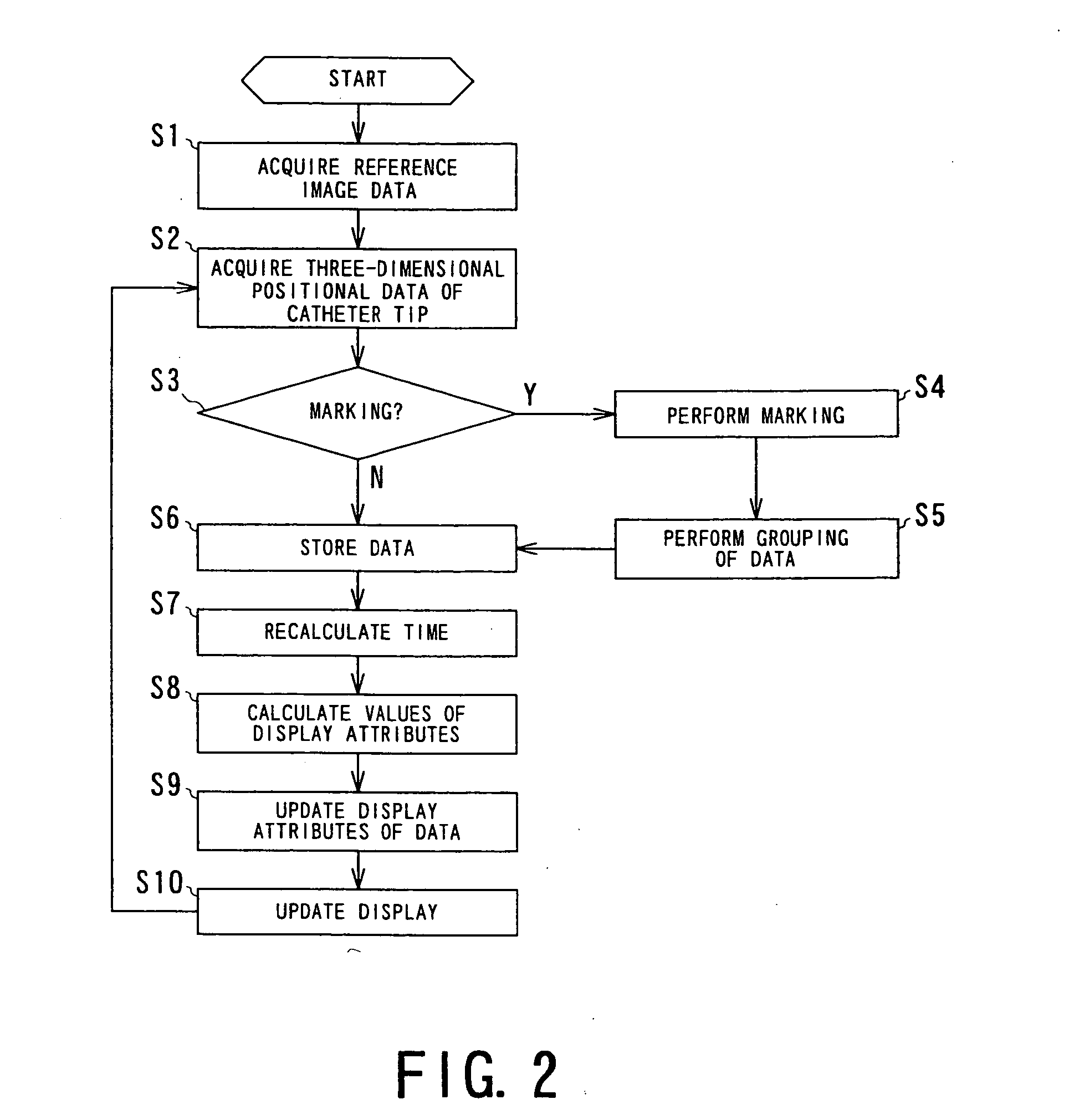Interventional MR imaging with detection and display of device position
a technology of magnetic resonance imaging and position detection, applied in the field of magnetic resonance imaging system, can solve the problems of positional detection of a device, difficulty in providing an operator with an accurate position of the device tip, and foregoing conventional techniques have encountered various difficulties, so as to facilitate the confirmation of necessary items
- Summary
- Abstract
- Description
- Claims
- Application Information
AI Technical Summary
Benefits of technology
Problems solved by technology
Method used
Image
Examples
first embodiment
[0061] Referring to FIGS. 1 to 4, a first embodiment of the present invention will now be described.
[0062] A magnetic resonance imaging system according to the present embodiment is constructed as, what we call, an open type of system. This open type of system provides an easier access to an object, which is therefore suitable for interventional MRI.
[0063] An outlined configuration of this magnetic resonance imaging system is shown in FIG. 1. The magnetic resonance imaging system is equipped with an open type of gantry GN in which a patient handles as the object is placed within a static magnetic field. This gantry GN has a magnet 1 for the static magnetic field, which is constructed by laterally arranged magnets such as superconducting magnets, and four pillars for support the magnets. The static magnet 1 has two pairs of disc-like magnets, each pair being placed in an upper or lower structure thereof, thus providing a diagnostic spacing between the upper and lower structures. A ...
second embodiment
[0096] Referring to FIG. 8, a second embodiment will now be described. The magnetic resonance imaging system used by this present embodiment is also applied to the interventional MRI. The constituents of this system are identical or similar to those in the first embodiment, so the same references are adopted to omit their detailed explanations.
[0097] The processing executed by the present embodiment is concerned with tracking of a catheter, i.e., a representative of various devices, that has been inserted into an object.
[0098] As described in the foregoing first embodiment, when the tip of the catheter under operations is tracked with use of a minute Rr detection coil (micro coil), only a small area (spot like area) obtained by processing signals acquired from the RF detection coil is depicted as tracking loci. However, the depiction of such a small area is unsatisfactory for a full understanding of positional relationships between the catheter tip and surrounding tissue and / or bl...
third embodiment
[0106] Referring to FIGS. 9 to 10, a third embodiment will now be described.
[0107] The magnetic resonance imaging system according to the present embodiment is directed to the interventional MRI capable of automatically tracking a cross section to be imaged to a puncture needle serving as a device.
[0108] An outlined configuration of the magnetic resonance imaging (MRI) system is shown in FIG. 9.
[0109] The magnetic resonance imaging system has a gantry 51 for generating a static magnetic field in which a patient as the object is placed. The gantry 51 includes a static field magnet 52 composed of for example a superconducting magnet. A diagnostic region of which magnetic intensity is uniform is in part formed of the static field generated by the magnet 52. For the magnet 52 formed in an approximately cylinder, a patient is located partly and entirely within the diagnostic region with the patient laid on a not-shown couch. In the case that the magnet 52 is an open type, a patient is...
PUM
 Login to View More
Login to View More Abstract
Description
Claims
Application Information
 Login to View More
Login to View More - R&D
- Intellectual Property
- Life Sciences
- Materials
- Tech Scout
- Unparalleled Data Quality
- Higher Quality Content
- 60% Fewer Hallucinations
Browse by: Latest US Patents, China's latest patents, Technical Efficacy Thesaurus, Application Domain, Technology Topic, Popular Technical Reports.
© 2025 PatSnap. All rights reserved.Legal|Privacy policy|Modern Slavery Act Transparency Statement|Sitemap|About US| Contact US: help@patsnap.com



